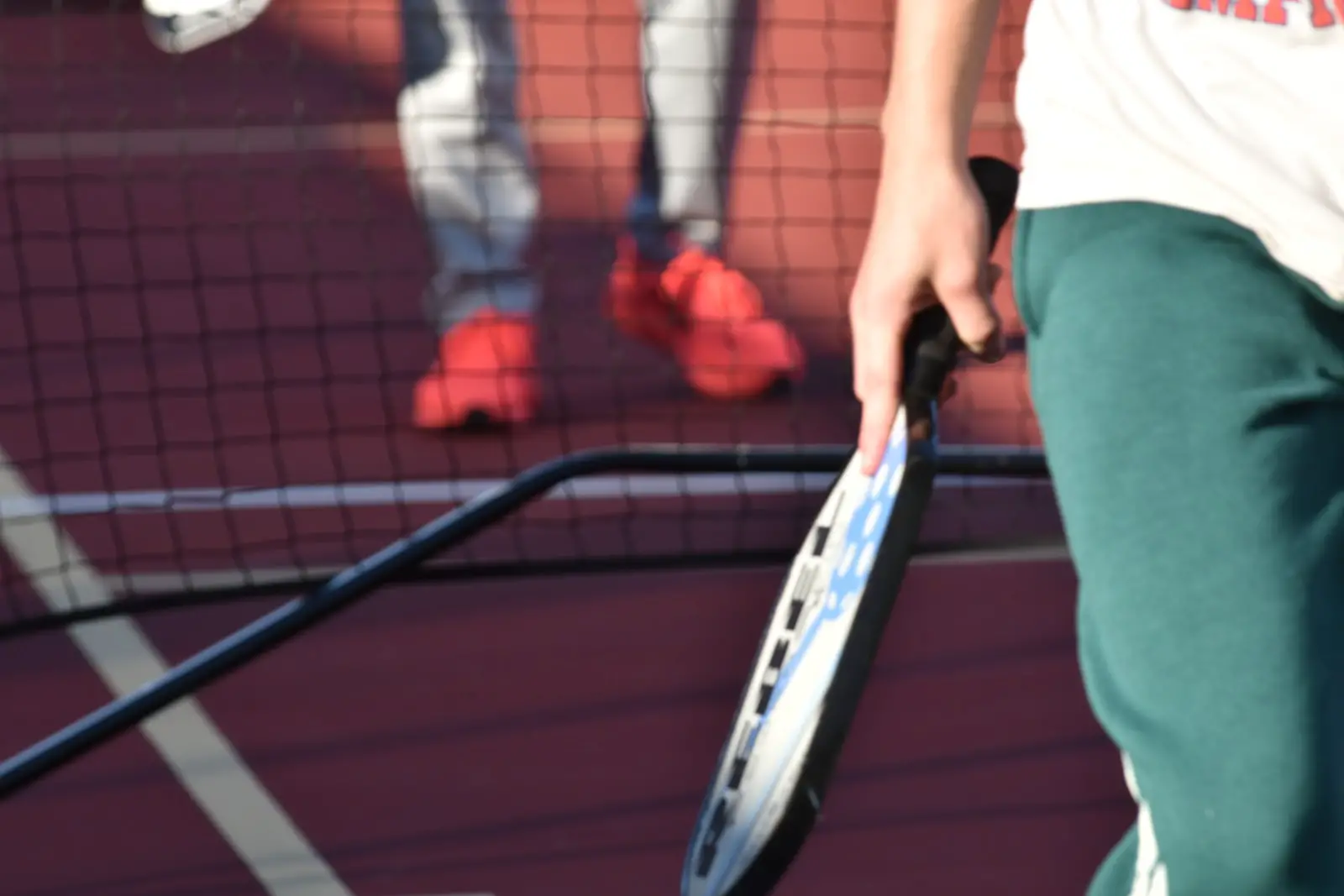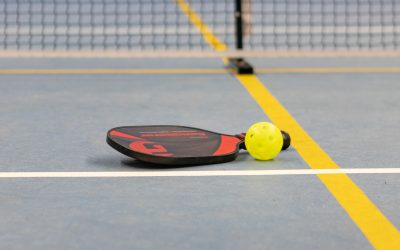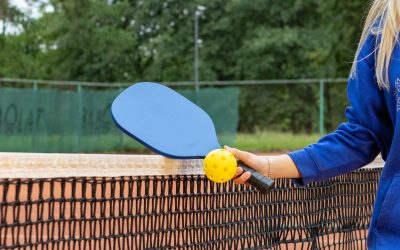So you’re diving into the world of Pickleball, or maybe you’re just looking to upgrade your gear? Either way, choosing the right Pickleball paddle can be a game-changer. It’s not just about picking the one with the coolest design – there’s a lot more to consider.
The weight, the grip size, the materials used – these are just a few factors that can significantly impact your performance on the court. But don’t worry, I’m here to guide you through the process and help you find the perfect paddle for your game.
Factors to consider when choosing a Pickleball paddle
Pickleball paddle selection is no small task. It’s not only about picking the best-looking paddle; you’ve got to assess several elements which include weight, grip size, material, and the playing surface. The right paddle can enhance your gameplay and significantly improve your court performance. We’ll delve deeper into these factors and uncover their roles in Pickleball.
Weight could be one of the most crucial factors. Paddles range from lightweight (~6 ounces) to heavyweight (~14 ounces). A lighter paddle offers exceptional control, making it perfect for dinking and intricate plays near the net. Conversely, a heavier paddle provides a stronger drive, ideal for powerful shots from the baseline. Here’s how weight ranges correspond to gameplay:
| Weight | Game Type |
|---|---|
| 6-8 ozs | Net play |
| 8-14 ozs | Baseline play |
Next, consider grip size. Typically, your grip size should align with your hand size. Larger grips offer stability but require more strength, while smaller grips provide control but are prone to twisting in the hand. I’ll provide a way to measure for this later on.
Another crucial aspect is the material. Paddle composition directly influences playability and price. Graphite and composite paddles, for instance, cater to advanced players due to their pricey nature and high touch, while beginners usually lean towards affordable wooden paddles.
Last but in no way least comes the playing surface’s size. Larger surface areas minimize misses and are great for beginners. Smaller surfaces offer more control but are less forgiving, thus, preferred by experienced players.
Weight – Why it matters and how to choose the right one
Let’s dive right into the first element – weight. Weight plays a vital role in Pickleball paddle performance, with its impacts felt in both control and power dynamics. It’s important to remember, the weight of the paddle you choose directly alters these dimensions of gameplay.
Lighter paddles, weighing between 6 to 7.5 ounces, are excellent for providing enhanced control. These paddles allow you to move quickly, make swift responses, and place your shots accurately. However, they may require more effort from you to generate power in your shots.
Heavier paddles, on the other hand, weigh 7.6 ounces or more and can reward you with extra power. These make it easier for you to drive the ball over the net and make powerful shots. However, heavy paddles can be challenging to control and may contribute to arm fatigue over prolonged play.
I’m sure you’re wondering how to choose, right? The choice between lighter and heavier paddles mainly depends on the player’s physical strength and their style of play.
- If you’re someone with high physical strength or you’re focused particularly on power play, a heavier paddle could be the right match for you.
- Contrarily, if swift movements, quick reflexes and shot placements form the crux of your gameplay, you might find a lighter paddle suits you better.
| Factors | Light Paddle | Heavy Paddle |
|---|---|---|
| Weight Range (in ounces) | 6 – 7.5 | 7.6 and above |
| Best For | Control | Power |
Grip size – Finding the perfect fit for your hand
Following weight selection, it’s now time to navigate another vital factor when choosing a Pickleball paddle: grip size. This paramount selection criterion is the determining factor for your comfort and performance during the game.
A too small grip size can lead to increased wrist action, putting you at risk for tennis elbow or other injuries. On the other hand, an oversized grip might reduce wrist action, limiting your power and shots’ accuracy. Thus, appropriately sizing the grip of your Pickleball paddle can be the difference between developing a repetitive strain injury and playing comfortably for an extended period.
Various methods can help you determine the correct grip size. The first and most popular method is the height measurement method. The rule is that players shorter than 5’3″ should use a grip size around 4 inches, while those standing between 5’3″ and 5’8″ may find a 4 1/4 inch grip comfortable. For players taller than 5’8″, a 4 1/2 inch grip might be the best fit.
Here’s a handy table to keep those measurements at your fingertips:
| Player’s Height | Recommended Grip Size |
|---|---|
| Less than 5’3″ | Around 4 inches |
| Between 5’3″ and 5’8″ | 4 1/4 inches |
| More than 5’8″ | 4 1/2 inches |
Another technique is the finger test. For this, you hold the paddle as you would during a game, leaving a comfortable space between your fingers and thumb. If you can fit the index finger of your opposite hand in that space, you’ve got the right grip size.
Selecting the proper grip size goes a long way in improving performance and reducing the risk of injury.
Materials used in Pickleball paddles – Which ones are the best?
As we move away from grip size, another critical component to consider is the material used to construct a pickleball paddle. This decision significantly impacts your performance. The three main materials typically used include graphite, composite, and wood.
Wooden paddles were the first paddle material used in the sport of pickleball. They’re known for durability and their budget-friendly nature. However, they tend to be heavier, which may affect swing speed and control.
Graphite paddles, on the other hand, are among the lightest on the market. The graphite surface offers excellent responsiveness, and it’s this factor that has made them the paddle of choice for many professional players. However, they can be pricier than Wood or Composite paddles.
Composite paddles sit somewhere in between. They blend different materials such as fiberglass, aluminum, and polymer. This combination creates a balanced tool that provides a great mix of power and control but can also swing to the pricier side.
Deciding on the appropriate material boils down to your personal preference and budget. Wooden paddles are a great start for beginners who aren’t ready to invest heavily. On the flip side, experienced players or those willing to splurge may lean towards composite or graphite paddles for their power and finesse.
Here’s a quick comparison:
| Material | Pros | Cons |
|---|---|---|
| Wood | Durable, low cost | Heavier, less control and power |
| Graphite | Lightweight, responsive | Costly |
| Composite | Balanced performance | Can be pricy |
Remember, comfort and personal preference should always be the ultimate guide when choosing a paddle. In the end, it’s the player, not the paddle, that truly makes a difference on the court. The choice of paddle material is just another element to optimize your performance in this fast-paced, exciting sport of pickleball. But what about the paddle’s weight? That’s another parameter that can have a considerable impact on your gameplay. So let’s dive into that next.
The importance of paddle shape and design
Digging deeper into the anatomy of a pickleball paddle, paddle shape and design also play significant roles for newbie and pro players alike.
There exists a variety of shapes and designs in the market, each serving a unique purpose that tailors to different playing styles.
Wide-Body Paddles
These are the most common among pickleball players, especially for those just starting out. Wide-body paddles typically measure about 8 inches wide and 15.75 inches long. They feature a large sweet spot, the prime hitting area on the paddle, making it easier to strike the ball consistently. This paddle shape is perfect for players who are still honing their accuracy skills.
Elongated Paddles
For players seeking more reach and power in their game, elongated paddles are the way to go. These are generally narrower and longer than wide-body models. At the expense of a smaller sweet spot, elongated paddles allow a player to reach further for balls and apply more force, thus adding speed to their shots.
Tear Drop Paddles
Tear drop paddles offer a balance between the wide-body and elongated paddle designs. With their length and width slightly greater than that of a wide-body, they provide a decent sweet spot without sacrificing the extended reach. This design suits intermediate players who’d like a blend of control and reach.
In choosing the right paddle shape, personal preference and playing style should be the guiding factors. But don’t fret about making the perfect choice right away. It’s a great idea to experiment with different designs until you find that perfect fit that adds flair to your game.
Remember: What’s vital is not just the player’s skill, but the interplay between the player and their gear. And, while we’ve dwelt on the mechanics, let’s not forget the aesthetic side of things. Perhaps the color or artwork on a paddle speaks to you. If it boosts your morale and makes the game more enjoyable, then that’s a catch worth considering. After all, pickleball should be a fun-filled endeavor. It’s a game, not a chore.
Moving forward from the mechanics and aesthetics, the next important attribute to consider is the weight of the paddle. But hold your paddles tight, that’s a discussion for another section.
Other key features to look for in a Pickleball paddle
Having considered grip size, materials, paddle shape and design, it’s critical we delve deeper into additional features that can improve your Pickleball game. I’m talking about factors such as weight, edge guard, and surface texture.
Let’s start with paddle weight. This feature holds significant sway over your shot control and power. Lighter paddles, generally between 6 to 7 ounces, offer quick manoeuvrability and finesse. On the other hand, paddles weighing 8 ounces or more grant power shot capabilities and stability. Thus, it’s invaluable to note any player’s preference for finesse versus power should influence their paddle weight choice.
| Weight range (ounces) | Advantages |
|---|---|
| 6 – 7 | quick manoeuvrability, precision |
| 8 and above | powerful shots, stability |
The paddle’s edge guard is yet another crucial feature. An edge guard protects the sides of the paddle from chipping, giving your gear more resilience and longevity. However, a wider edge guard can sometimes disrupt low-angle shots, hence the need for careful consideration.
Lastly, I’d like to highlight the importance of surface texture. A rougher texture increases ball spin and control during service and return shots. Conversely, smoother surfaces tend to be more predictable with reduced spin. The choice here again boils down to your playing style and strategy.
As we explore these features, it’s important to remember that the best Pickleball paddle is the one that feels right in your hands. You’ll need to experiment and find a balance that meets your playing style, comfort, and personal aesthetics. Embrace the journey towards finding the perfect Pickleball paddle, for it can be as exciting as the game itself.
Conclusion
So there you have it. Picking the right Pickleball paddle isn’t just about the price tag or the brand. It’s about considering the weight, edge guard, surface texture, and most importantly, how it feels in your hand. Remember, a lighter paddle gives you finesse and maneuverability while a heavier one lends power and stability. An edge guard is crucial for paddle longevity and surface texture can greatly influence ball spin and control. But don’t forget, it’s your playing style and personal preference that should ultimately dictate your choice. So don’t rush. Take your time and enjoy the process of finding the paddle that’s the perfect fit for you. Happy playing!














0 Comments